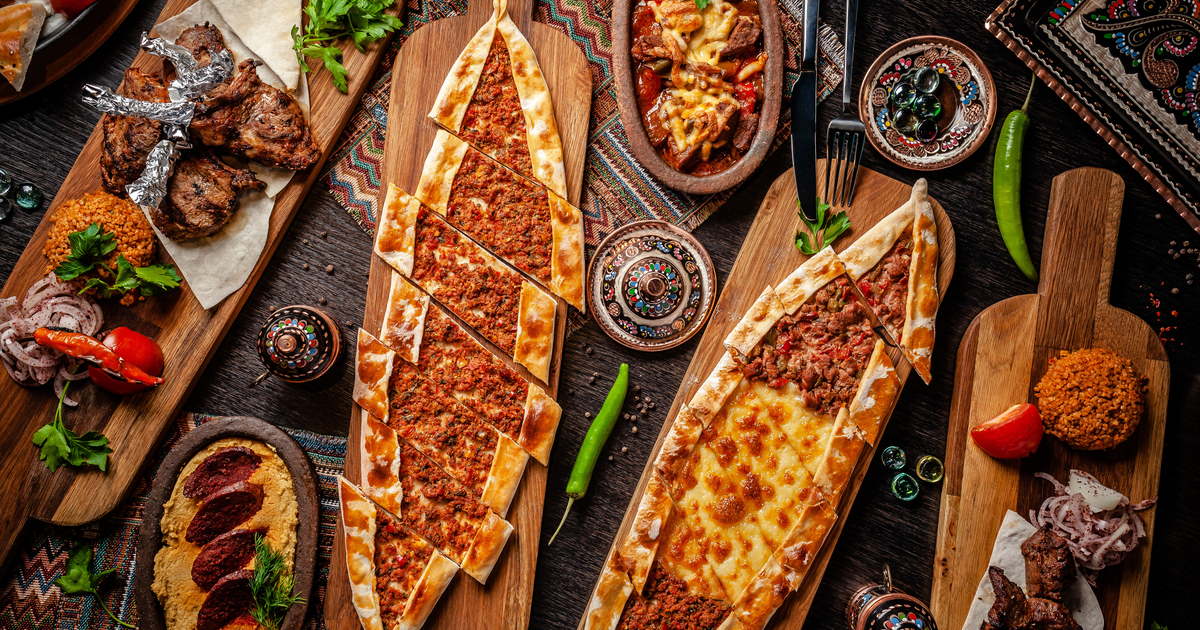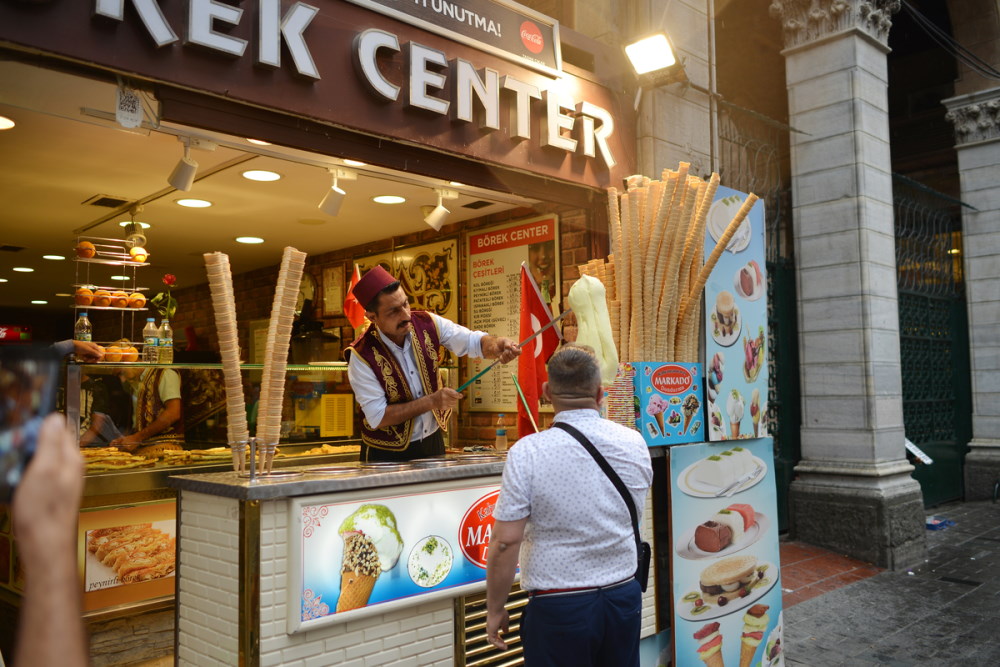Turkish cuisine has a very long history and is influenced by nomadic cooking traditions of Turkic peoples, as well as by Persian, Kurdish, Arabic, and Armenian cuisine and the cuisines of the Mediterranean and the Caucasus.
For a long time, Turkish cuisine was known only by the famous Döner. Turkish food is not limited to kebabs, but is characterized by its almost infinite variety. There are several dishes that people like to eat and know all around the country. We have compiled an assortment of 20 dishes you should absolutely taste while traveling in Turkey.
"Afiyet olsun" as they say in Turkey.
1. Kebab
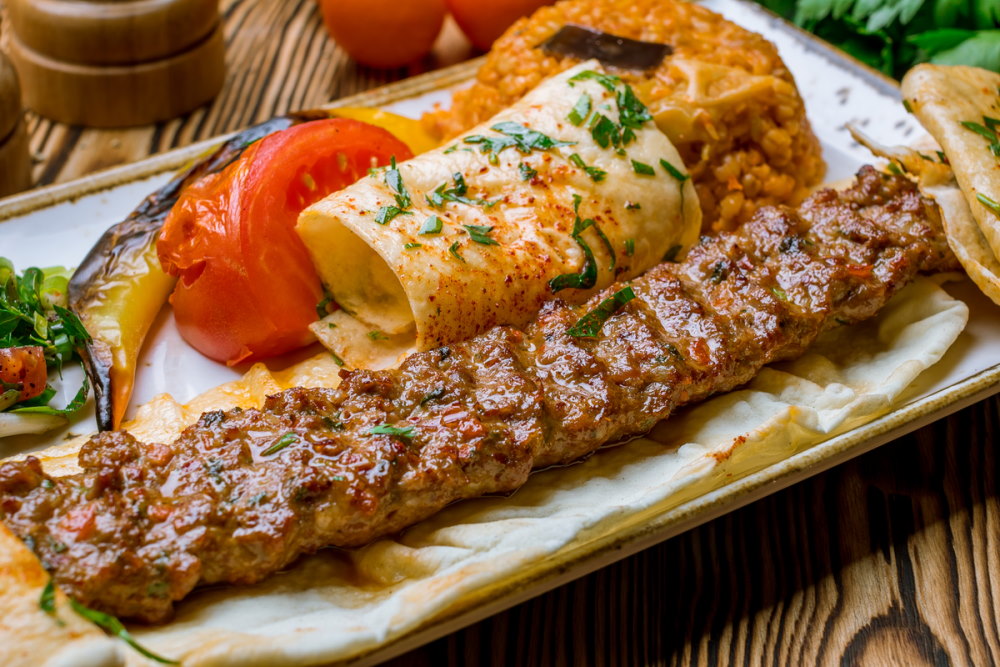
Kebab means "grilled or roasted meat". There are many different types of kebab in the Turkish kitchen. In restaurants, the kebab is usually served with side dishes such as rice or bulgur as well as with grilled tomatoes and peppers. Here are few of many different kebab varieties :
- Döner Kebab is probably the most popular version. Slices of meat aromatized with marinade are placed in layers on a rotating spit and grilled on from the side, whereby the spit rotates slowly but constantly. Gradually, the outer, browned layers are cut off thinly. Döner Kebab can be eaten both in bread as a sandwich and as a plate dish.
- Iskender Kebab is a kebab served on flat bread, with yoghurt, grilled peppers and tomatoes, and doused with melted butter. Iskender kebab was originally created in Bursa, therefore it is sometimes also called Bursa kebab.
- Beyti Kebab is grilled minced meat wrapped in very thin, soft flat bread and served with tomato sauce and yoghurt.
- Adana Kebab is spicy minced meat grilled on a long spit.
- Urfa Kebab is the milder version without the spiciness.
2. Köfte

Köfte is meatballs with spices and fine herbs, usually grilled but sometimes boiled in sauce. Like kebab, köfte is a type of food with a variety of seasonings, cooking types, and serving presentations. Each region has its own special variety.
Regarding the form and size, köfte is smaller than meatballs. Minced meat is mixed with finely chopped onions, egg, breadcrumbs, salt, pepper, and cumin, formed and then fried in oil.
It's served with grilled tomatoes, peppers and, if desired, pommes frites and salad. Here are a few popular different types of köfte:
- Inegöl Köfte is prepared without spices only with onions and minced meat and then formed into a square.
- Izmir Köfte is cooked along with potatoes and tomatoes in the oven.
- Sulu Köfte is a round meatball that is cooked with potatoes and carrots in a brew that is then refined with lemon and egg yolk.
- Çiğ Köfte : "raw köfte" is an intensely flavored raw meatball made from minced, low-fat beef. When they are eaten, they are wrapped in a lettuce leaf and sprinkled with lemon.
- Çiğ Köfte without meat : Çiğ Köfte can also be prepared with fine bulgur instead of minced meat. In recent years, this variant has become very popular, since by law Çiğ Köfte prepared with raw minced meat, for hygienic reasons may only be offered for consumption in selected restaurants and must be served and eaten promptly.
3. Dolma

Dolma means "stuffed" in English and describes vegetable or grape leaves filled with rice and/or minced meat. Dolma filled with rice is prepared with olive oil, and spiced with onions, pine nuts, cinnamon, coriander, and small dried raisins, and then seasoned with lemon and traditionally eaten cold. Dolma filled with minced meat is eaten warm. Yogurt is served with warm dolma.
- Stuffed grape leaves: the stalks of fresh grape leaves are removed, the grape leaves are briefly blanched in salted water, then some stuffing is portioned inside each grape leaf, the leaves are rolled up, doused with tomato sauce and then cooked.
- Stuffed white cabbage leaves: are prepared just like stuffed grape leaves
- Stuffed peppers, eggplants, tomatoes, and zucchini: minced meat mixed with finely chopped onions and rice, seasoned with salt, pepper, and tomato paste, is filled into previously hollowed out vegetables and cooked
All dishes can also be prepared with olive oil and served cold.
4. Karnıyarık

Karnıyarık translates to English as "torn belly". Eggplants are peeled in strips, fried in oil, hollowed out and filled with a mixture of minced meat, tomatoes, parsley, onions, and garlic, and seasoned with salt and pepper, then doused with tomato sauce and cooked in the oven.
The dish is eaten warm and served with rice. A classic that Turkish people love!
5. Imam Bayıldı
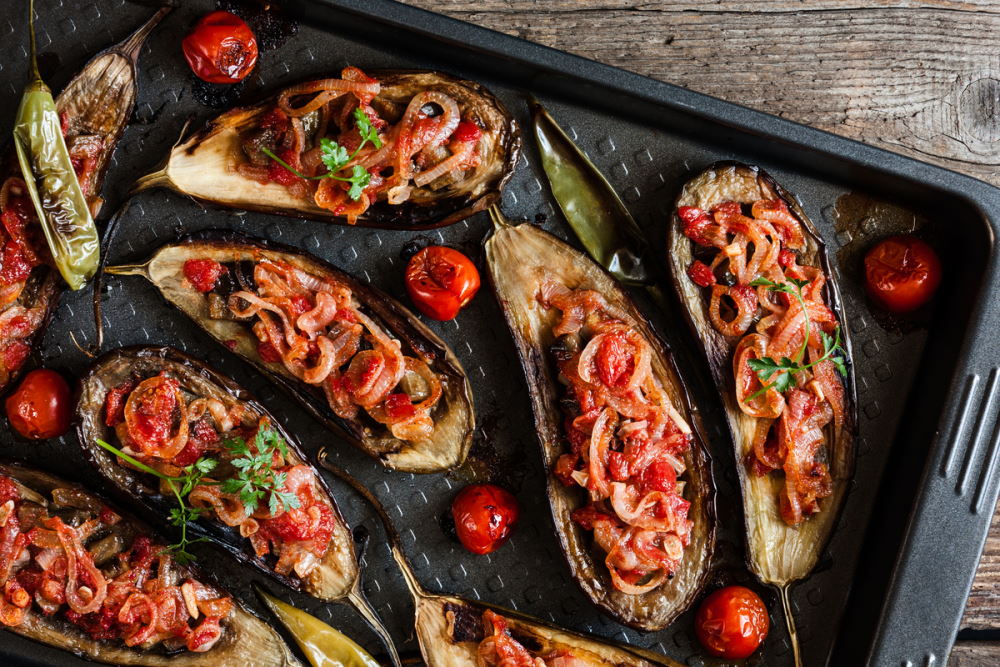
Imam Bayıldı is the vegetarian form of Karnıyarık, prepared with olive oil. It contains no minced meat and is seasoned with salt, thyme, pepper, nutmeg, and some cinnamon.
Imam Bayıldı translates to "the Imam fainted" in English. Legend has it that a prayer leader (Imam) fainted from excitement when he tried the dish for the first time.
Imam Bayıldı can be eaten warm with rice or cold as an appetizer.
6. Hünkar Beğendi
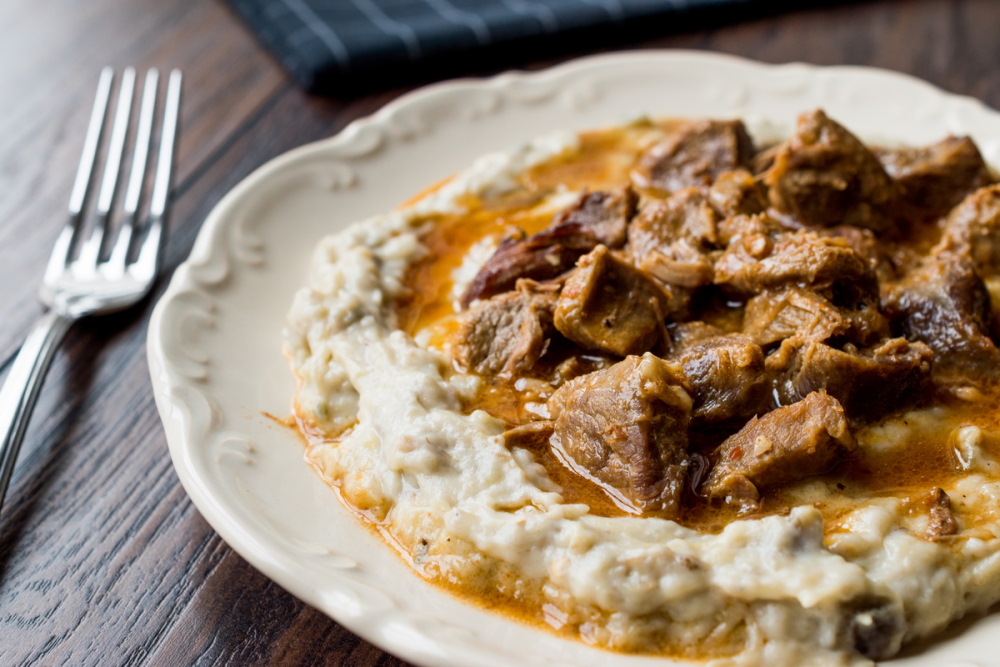
Hünkar Beğendi is made from smoked, grilled eggplants that are pureed and then stirred with milk, melted butter, grated cheese, and flour. Finally, the mixture is topped with small cubes of sautéed lamb. It is seasoned with garlic, pepper, salt, and nutmeg.
The dish is served warm.
Hünkar Beğendi translates to "the sultan enjoyed it" in English. Legend has it that the wife of Napoleon III, Princess Eugénie, fell in love with the eggplant puree during a visit to Istanbul and it has since then borne this name.
7. İşkembe Çorbası

İşkembe Çorbası or tripe soup is one of the national dishes in Turkey. Often it is eaten after plentiful consumption of Rakı and is considered a "hangover cure".
After a few hours of salting, the tripe is washed and cooked in lemon water for several hours. Afterwards, tripe is cut into thin strips and cooked in a brew until done. It's seasoned with a mixture of plenty of crushed garlic, vinegar, a spoonful of melted butter, and rose peppers.
8. Börek
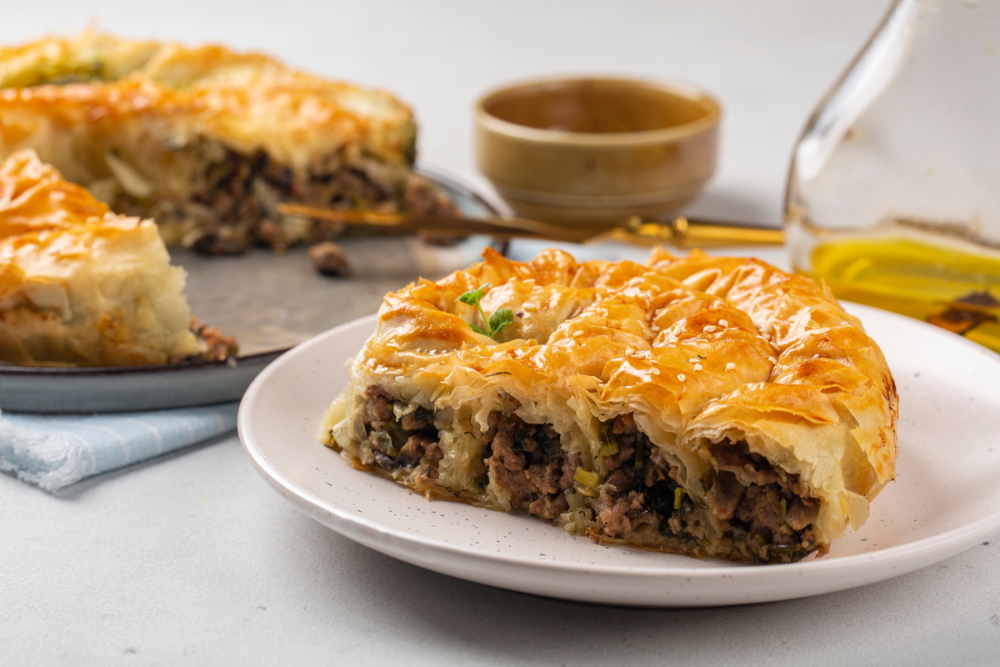
Börek is a filled bakery product made from a thin dough, usually yufka. It is filled with minced meat, cheese, spinach, and many other things. Börek is baked in the oven or fried in oil in a pan, the top is coated with egg yolk or sprinkled with sesame seed/black cumin.
There are many different variations of börek. Here are few :
- Su Böreği is prepared from cooked dough sheets, which are topped with cheese or minced meat and cooked in the oven.
- Sigara Böreği has the shape of a cigar and is filled with cheese or minced meat and fried in oil in a pan.
- Pançanga Böreği is filled with cheese and Pastırma and fried in oil in a pan.
- Kol Böreği is prepared from long rolls of dough filled with cheese or minced meat, which are placed in a round baking tray and baked in the oven.
Börek is very popular in the Turkish kitchen and are often served with afternoon tea.
9. Meze

Meze actually refers to the way the starters are served. The small plates of hors d'oeuvres are served in the middle of the table, and everyone helps themselves.
In Turkey, the term meze refers to the starters themselves, of which there are over 300 different types.
Typical ingredients used to prepare meze are chickpeas, tahini, yoghurt, egg-plant, tomatoes, beans, peppers, courgette, olives, and olive oil. Seasonings include cumin and coriander.
Often the waiters come with a huge tray full of small meze plates, from which you can choose at your pleasure. Humus, haydari, egg-plant salad, and chicken salad with walnuts are just a few of the traditional mezes.
Mezes play an important role in Turkish cuisine. Traditionally, Rakı is drunk with mezes.
10. Pide

Pide is a flat bread baked in a stone oven with toppings. The shape is oval and the topping is reminiscent of an eye. Here are some different types of pide toppings:
- Kaşarlı Pide is prepared with melted cheese
- Kıymalı Pide with minced meat
- Yumurtalı Pide with a fried egg
- Kuşbaşılı Pide with spiced pieces of meat cut into very small cubes
11. Lahmacun

Lahmacun is often called Turkish pizza. A spicy mixture of minced meat, onions, and tomatoes are spread on wafer-thin, round, rolled out dough, afterwards the flat bread is baked in a stone oven.
It is eaten by sprinkling the oven-fresh Lahmacun with lemon, covering it with finely chopped lettuce, tomatoes, and onions and then rolling it up.
12. Gözleme

Gözleme is thin, mostly spicy filled flat bread. The dough is rolled out to a very thin flat bread, which is at least the size of a plate. One half is covered with the filling, then the flat bread is closed by folding it and the edges are pressed firmly together. Gözleme is baked on a large, domed heating plate, called a saç. Before serving, gözleme is coated with melted butter.
Cheese, spinach, potatoes, and minced meat are very popular fillings.
You can often watch women dressed in traditional folk costumes in restaurants prepare the gözleme.
13. Kokoreç
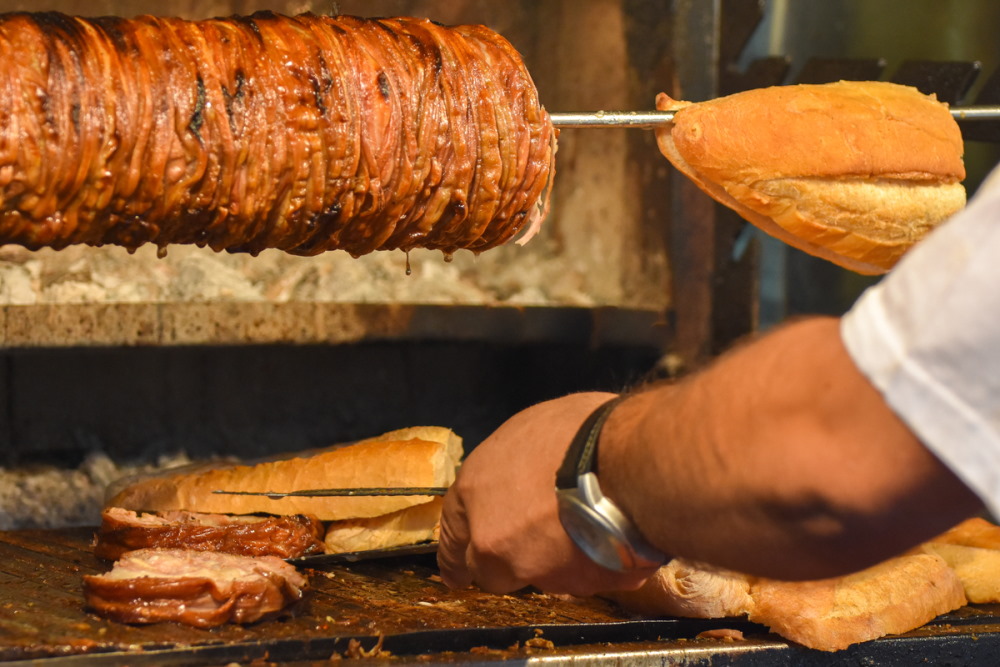
Kokoreç is a Turkish specialty prepared from small, cut, grilled lamb intestines. The intestines are wound in a coil on large skewers that rotate horizontally on a special charcoal grill. It's seasoned with salt, pepper, thyme, caraway, and hot paprika powder.
To serve, the kocoreç is chopped into small pieces, mixed with onions and tomatoes and served either in bread or on a plate. Common side dishes are hot peppers pickled in vinegar.
In Istanbul you can see numerous sellers who cook their kokoreç over charcoal on a small wheeled grill cart, directly to walk-up customers.
14. Balık Ekmek

Balık Ekmek means "fish bread" in English. It's a fried or grilled fish fillet, usually a mackerel or something similar, served with lettuce, tomatoes, and onions in Turkish white bread. They are typically seasoned with salt and lemon.
The sellers at the shipping piers are famous, especially in Eminönü, Istanbul where the dish is prepared on boats docked at the piers and sold directly from there.
15. Simit

Simit is a ring-shaped yeast pastry with sesame seeds on the crust. The sesame curl is mainly offered by street sellers, sometimes in small mobile handcarts, sometimes the sellers carry mountains of simits artfully arranged on a tray on their heads through the streets.
Ayran, a drink made from yoghurt and salt, which is reminiscent of buttermilk, can be drunk with it.
Simit is also sold in bakeries, but the ones from street sellers are crispier.
Simit can be eaten at any time of the day for small hunger in between meals. At breakfast time, they are served with olives and cheese.
16. Aşure
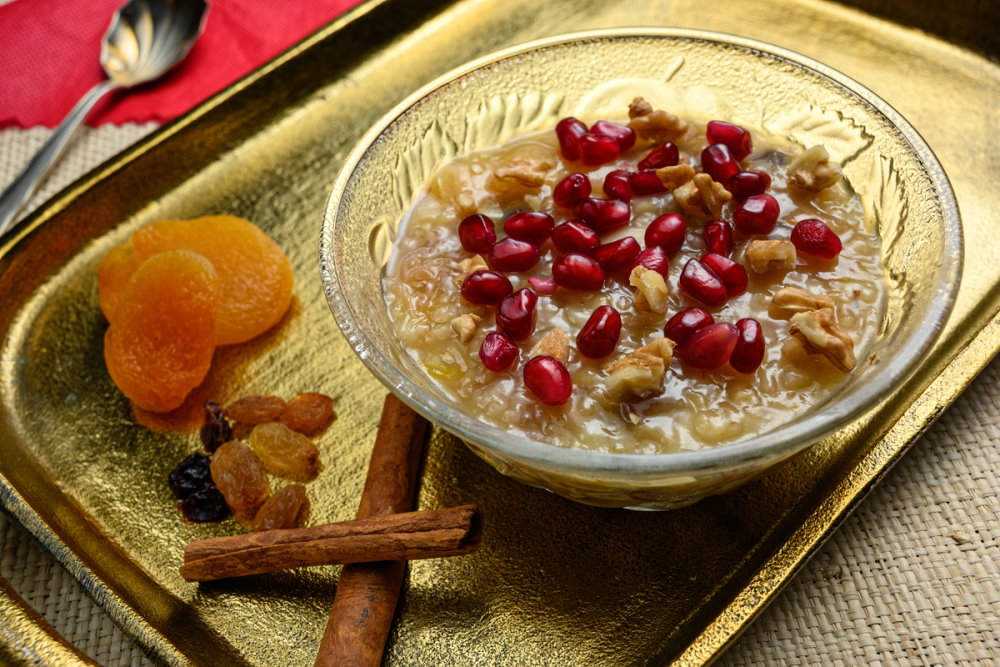
Aşure is a very popular dessert. It's made from white beans, chickpeas, wheat, rice, small rasins, and chopped walnuts, all cooked separately and then mixed with sugar. It's decorated with pomegranate seeds. The dessert is considered to be relatively sweet for the European palate.
Legend has it that after the great flood, Noah prepared this dessert with the last of his supplies and ate it with the survivors of the ark as a festive meal.
17. Baklava

Baklava is a sweet treat made of puff pastry covered in honey or sugar syrup and filled with walnuts and pistachios. Many layers of a paper-thin dough are placed on top of each other on a baking sheet, with a thin layer of the filling spread between each layer. After baking in the oven, baklava is topped with a syrup of made of sugar water.
Very, very sweet. But so tasty.
18. Maraş Dondurması
Traditionally dressed street vendors sell ice cream in their mobile carts. Unlike the ice creams known in Europe, Maraş-Dondurma has a chewy, sticky consistency, which is mainly due to the addition of salep. Salep comes from the tubers of some species of terrestrial orchids. Another benefit of adding salep is that the ice cream melts more slowly.
The sellers continuously stir the ice cream, which allows it to maintain its elastic consistency.
When handing the ice cream to customers, the salesmen often joke around, pulling the ice cream away again, showing customers how elastic the ice cream is and how far it can be stretched. Ice cream and entertainment included....
19. Rakı
Of all the alcoholic beverages, rakı alone is the Turkish national drink. It's made from grapes harvested when ripe, fermented, and distilled. Afterwards anise is added and it's distilled again. The drink has a flavor similar to licorice.
The clear spirit has a 40-50% alcohol content. The best known brands are Yeni Rakı and Tekirdağ Rakı. Some of the others are Izmir, Altınbaş, Burgaz, Efe, and Beylerbeyi Rakı.
Rakı is served in rakı glasses: slender, tall, thin glasses, which remind you of long drink glasses. Usually two to three finger widths of rakı is filled into the glasses and then the same quantity of water. Dilution with water causes rakı to turn a milky-white color. After each sip of rakı, a sip of water is taken.
At a traditional rakı sofrası, or rakı table, there are numerous hot and cold mezes on the table and people eat and drink for hours, often accompanied by Turkish folk music.
In Turkey, it’s not common to drink rakı alone, it’s considered a sign of loneliness.
20. Çay
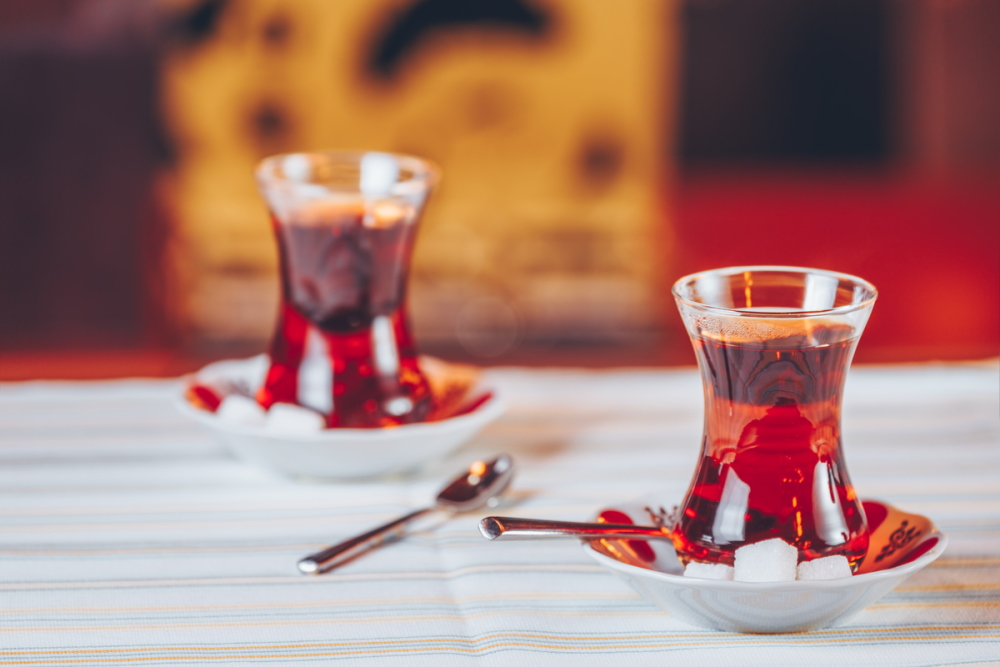
Turkish tea is prepared using two pots stacked on top of each other, called Çaydanlık. Water is boiled in the lower pot and then poured onto the tea leaves in the upper pot. After the tea has been brewed, the strong tea brew from the top pot is first poured into the glasses for serving. Then, water from the lower pot is poured. This method allows each guest to decide for himself whether he wants to have a strong or weak tea. Tea is drunk in small tulip-shaped glasses that are narrowed in the middle so that the tea stays hot longer.
Turkish tea is drunk everywhere and always. Don't be surprised if you are offered tea while shopping in a shoe shop. This is a standard feature of Turkish hospitality.
Bonus : Türk Kahvesi
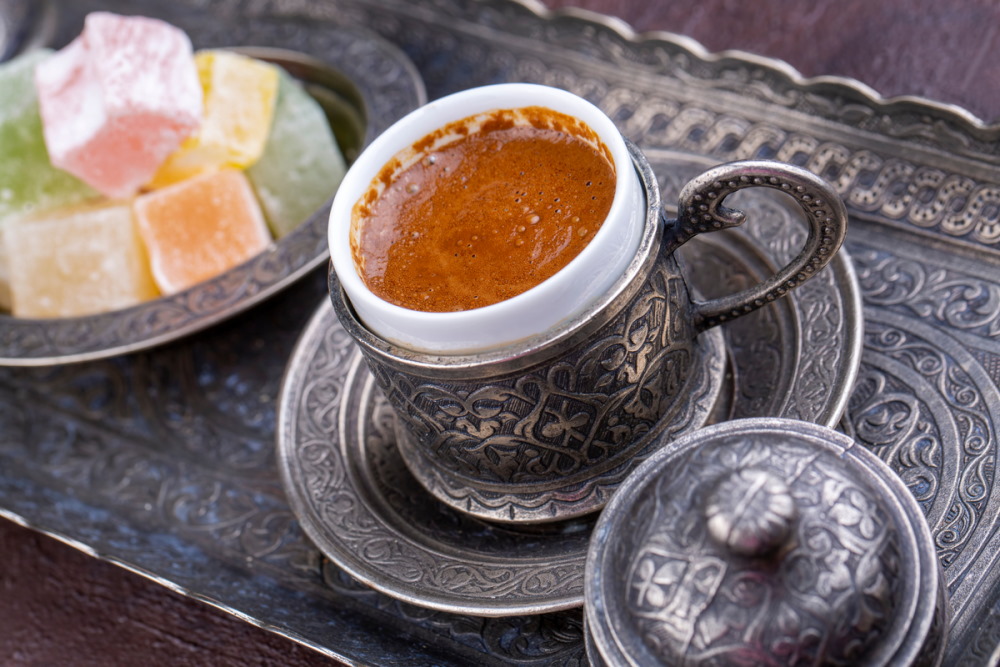
A characteristic feature of Turkish coffee is that the coffee grounds are poured into the cup. The method of preparation has been part of UNESCO Immaterial World Cultural Heritage, since 2013.
Finely ground coffee powder is mixed with water in a small copper or brass pot and boiled over a low flame until it almost overflows. The resulting foam is equally distributed among the coffee cups. The coffee is then boiled again, and finally poured into the cups. It's drunk from small cups, which are similar in size to espresso cups. Due to the special way it is prepared, Turkish coffee contains small floating particles of coffee grounds, which give it a viscous consistency.
When ordering, you must choose whether you want your coffee without sugar - şekersiz - with little sugar - orta şekerli - or sweet - şekerli
In some places you can turn your coffee cup over with the coffee grounds on the saucer and then have the future predicted.
These are the 20 dishes you should absolutely try during your trip to Turkey. If there are other dishes that you would like to recommend, don't hesitate to write them in the comments below.
If you like Turkish food, also read our article about local food in Antalya and our special article about sweets and desserts in Turkey.

